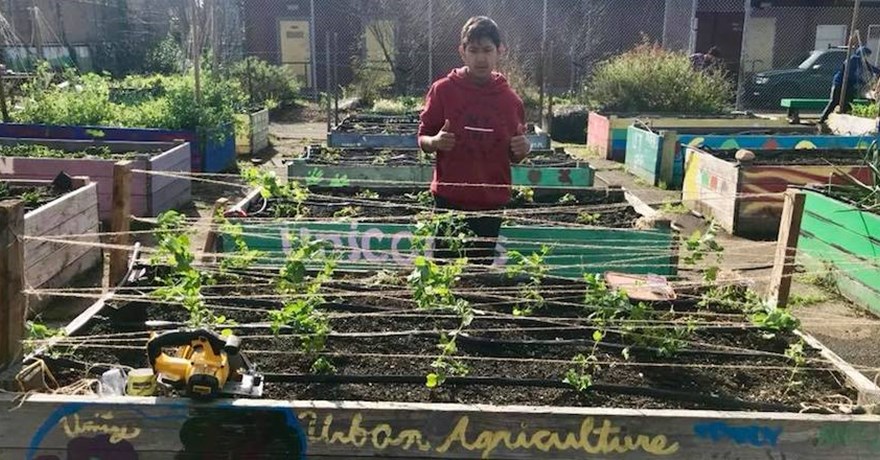Gardens
Urban Tilth community garden | Photo courtesy Urban Tilth
The popularity of community gardens has grown significantly in recent years as cities and residents recognize the important advantages they offer. Cultivated and maintained by local neighborhoods and citizens, these gardens allow communities to grow their own fresh produce, food and flowers. In many cities, gardens are created on abandoned or empty parcels, turning unproductive spaces into valuable and active sites.
Urban gardens offer several benefits for local communities and can provide much-needed social, environmental and economic improvements to neighborhoods. Not only do the gardens encourage awareness of food systems by growing fruits and vegetables using local resources, but they also foster community participation by becoming gathering spots for neighborhood residents.
Sustaining a community garden, though, involves challenges such as long-term maintenance, volunteer management and difficult growing environments. Many gardens are located in exposed areas, leaving them susceptible to vandalism. Anyone interested in starting and maintaining community gardens must be prepared by testing soil, selecting appropriate plants and working with a cross-section of the community. Just as a plant cannot take root if the conditions are not right, a garden cannot succeed without the support of a wide variety of neighborhood stakeholders.
Community gardens also offer unique opportunities for recycling and reusing local resources through the use of rainwater for irrigation and composting for plant fertilizer. The environmental benefits associated with urban gardens are important not only to the local community, but to the greater metropolitan area through the increase in accessible green spaces.
Trails provide potential venues for community gardens, and they create important links between a city’s green spaces, including parks, recreational areas and other community gardens. These links and spaces are vital to the environmental, social and economic health of urban areas, as they reduce the need for motorized transportation and create active and involved communities.
Below are some examples of gardens along trails or rail lines:
- DC Prep Garden on the Metropolitan Branch Trail, Washington, D.C.
- Soo Line Garden on the Midtown Greenway, Minneapolis, Minn.
- 6th Street Community Garden on the Richmond Greenway in Richmond, Calif.
- Southwest Corridor Park, Boston, Mass. The Southwest Corridor is a linear park above and beside rail lines serviced by Amtrak and MBTA subway and commuter rail.
- There are community garden plots along the West 6th Avenue rail corridor in Vancouver, B.C. For more information, contact City Farmer.
- The St. Paul Community Garden is located along an active rail line in Madison, Wis. Contact the Community Action Coalition for South Central Wisconsin for more information.
Resources

TrailNation Collaborative
TrailNation™ Collaborative is a nationwide peer learning community from Rails to Trails Conservancy that brings together advocates, leaders and professionals from across disciplines to establish and accelerate trail networks across America. The collaborative provides proven tools, methods and resources, combined with RTC’s expertise and network of partners across the country, to accelerate the development of connected trail systems. When trails are connected across regions and states, trail networks have a proven transformative impact—they are essential infrastructure that creates thriving, healthier communities.